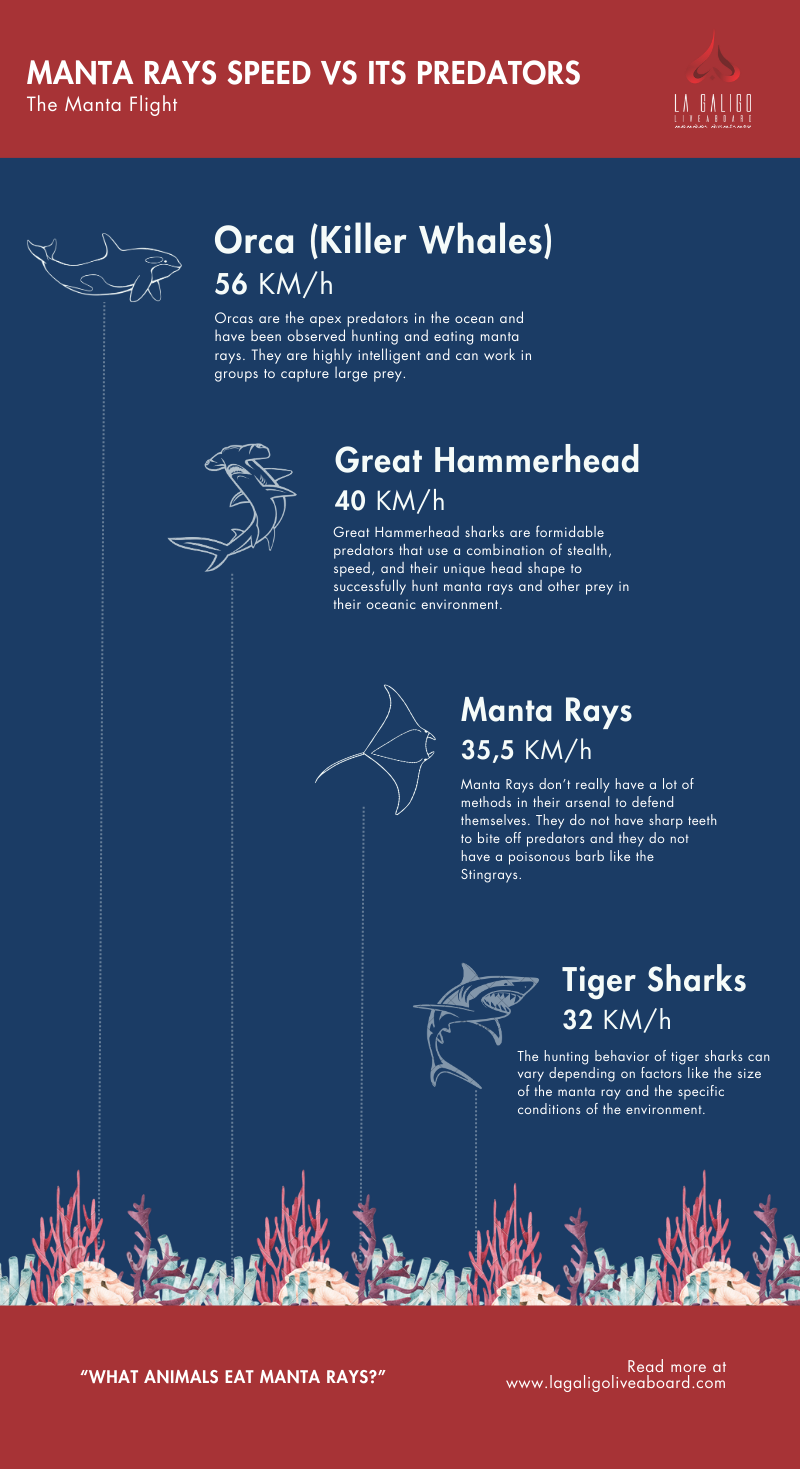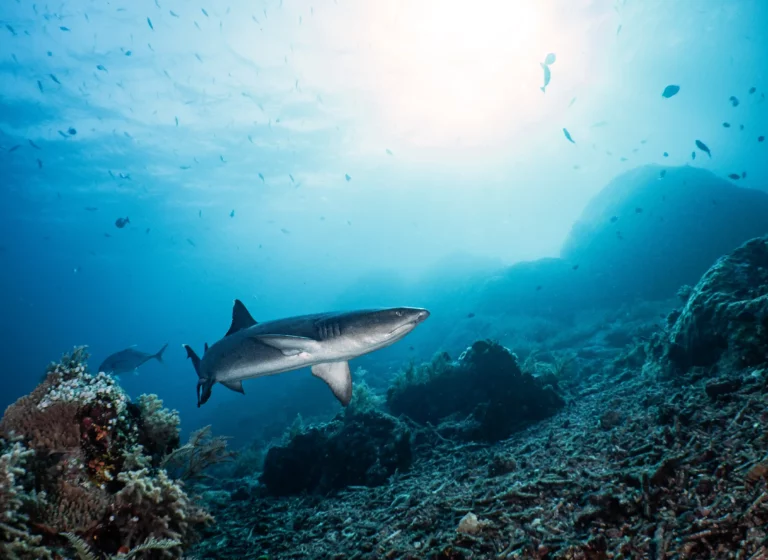Manta Rays are among the largest creatures inhabiting our seas, and they can reach an impressive seven metres in width and weigh up to two tons as adults. Despite their imposing size, they are some of the gentlest and smartest creatures you might be lucky enough to encounter. Their diets consist primarily of zooplankton and small to medium-sized fish, a diet that categorises them as macro-predators.
Now the question is, what predators prey upon these giant creatures?
Table of Content
Predators to Manta Rays


Sharks
Sharks are known to prey on a variety of marine animals, and Manta Rays are most certainly amongst their potential prey. Not all sharks can eat Manta Rays though, as a large, healthy adult Manta Ray is a powerful swimmer, thus making them more challenging to capture and devour.
Some sharks that are strong and big enough to hunt down a Manta are Tiger sharks, Great Hammerhead sharks, Bull sharks and White sharks. It is worth noting however, that some other species of sharks are opportunistic scavengers. This means that once a Manta is dead, these sharks will come down to eat it too.
Read Also: What Sharks Can I See in Komodo?
Orcas (Killer Whales)
Orcas are one of, if not, the apex predators in the ocean and have been observed hunting and eating Manta Rays. They are highly intelligent and can work in groups to capture large prey. This research from the Latin American Journal of Aquatic Mammals recorded and documented a group of killer whales killing and eating giant Oceanic Manta.
Research suggests that generally, Orcas may choose to hunt Manta Rays due to their slower swimming speed compared to the Orca.
This choice could be categorised as “energy-efficient prey”. This means that it does not take a lot of energy and effort for an Orca to chase down a Manta.
Furthermore, it also stated that Manta Rays could also be an easy target practice for the younger Orcas.
Read also: How do Manta Rays Reproduce?
Humans
Although not natural predators in the ecological sense, sadly, humans do hunt Manta Rays through targeted fishing. Manta Rays are often sought after for their gill rakers, which are highly valued in traditional Asian / Chinese medicines, as it is believed to possess medicinal properties.
Their gill plates, known as gill rakers, fetch high prices in markets where they are used in various traditional remedies. This demand fuels targeted fishing efforts despite the legality issues surrounding it.
In Indonesia itself, despite having regulations against targeted Manta Ray fishing, illegal poaching is still rampant in some areas due to the vastness of the Archpelago. Sadly, the allure of profit outweighs the risks of penalties for many fishermen, perpetuating the threat to Manta Ray populations in the region.
How do Manta Rays Defend Themselves?
Manta Rays don’t really have a lot of methods in their arsenal to defend themselves. They do not have sharp teeth (they don’t have teeth at all) to nip predators and they do not have a poisonous barb like their Stingray cousins. What they do have however, is speed, agility and size.
Their sheer size generally scares off wannabe predators before they could think about taking it down for food. What’s more is that they are also strong swimmers. An adult Manta can reach 14.5 Kilometres per hour (9 miles per hour) and can accelerate in bursts up to 35,4 Kilometres per hour (22 Miles per hour).
So to answer the question, Fight or Flight, Manta Rays will always choose to do a runner.









